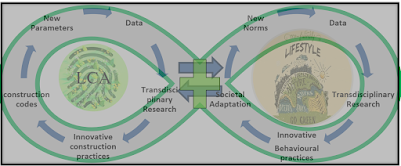Why we shiver inside an old passively oriented Building?
Why during winters, does it feel colder inside an old passively built habitat? And what can improve it?
Yes, at present the
Delhi NCR is undergoing extreme heat, the corona epidemic has forced us all to
stay indoors. One is lucky to reside in a passively oriented low-rise habitat
with grown-up trees. But those in high-rise apartments without passive orientation
have to bear the burnt.
Typical specifications followed a couple of decades back allowed for air gaps that permitted dimensional changes on account of seasonal thermal and air humidity variation. We had not entered the Anthropocene and climate-induced weather extremities had not penetrated human consciousness.
Illustration taken from CPWD Manual on Door and Window Details for Residential Buildings https://cpwd.gov.in/Publication/manualdw.pdf below shows that 10 mm space below the door was a norm.
As quantified and heat mapped in the simulation, these gaps allow the pressure difference to suck in the cold wind of the shady side towards the sunny and hot facade.
The phenomenon which can be easily stopped by air-tight door and window elements also does not allow the sunny side to warm up and provide adequate radiative heat to the occupant. We shiver in contrast with the possibility of enjoying cosy warmth.
Urbanization has been resulting in declining wind speeds. The phenomenon has now been quantified but site-specific studies are required. So our assumption of the absence of wind is quite valid. The Excel file can be downloaded by clicking ColdSimulation.Xlsx.
Qualitative literature on a feeling of cold also needs quantification. The reference tab in the Excel file provides the references, assumptions and further readings.






Comments
Post a Comment